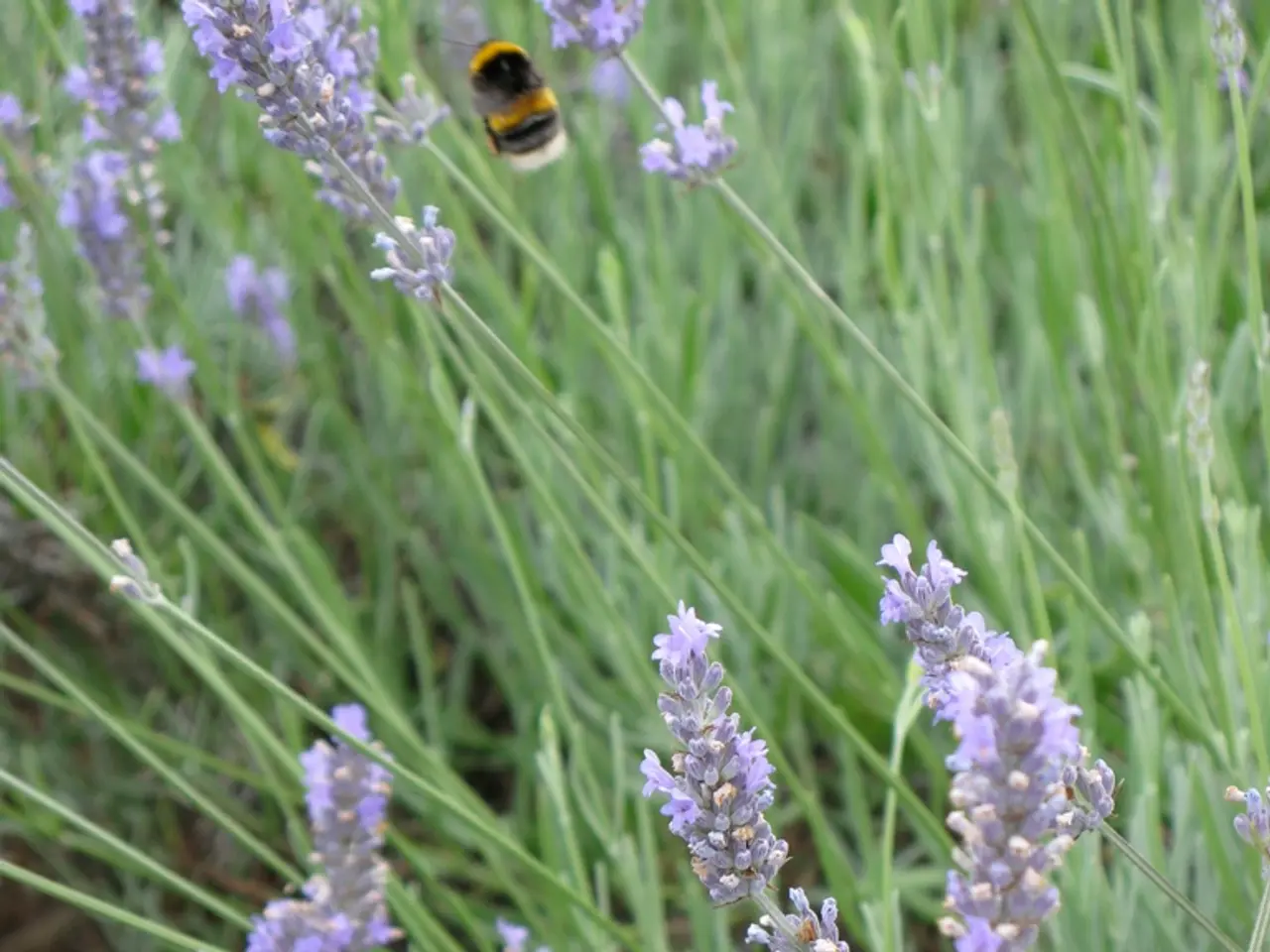Creating a Watering Station for Pollinators: Steps to Install Bee-Friendly Watering Cups in Gardens
In our gardens, we often focus on the flowers that attract bees, but what about providing them with a much-needed source of hydration? Bees are vital pollinators, contributing to a third of the food we eat and the fibres used to make our clothing [2]. Here's how you can create a bee water station in your garden to support these hardworking insects.
Bee cups, designed by Jen Rose, are a charming solution for a bee water station. These porcelain cups, reminiscent of vintage teacups, make an elegant garden feature while serving as mini drinking stations for pollinators like bees and butterflies [3]. The cups, which only hold a teaspoon of water and have a textured surface, are designed with insect anatomy in mind, including size, texture, and a UV-reactive glaze for visibility to insects [6]. The UV-reactive glaze on Bee Cups glows pink to bees, making them resemble flowers [7].
If you're looking for a DIY solution, you can create a bee water station using a shallow dish or saucer filled with water and add pebbles, marbles, or coarse moist sand for the bees to safely land on and drink without drowning [4]. Place the station near flowering plants for easy access, keep it clean, and refill it regularly to provide fresh water [4].
For a more creative touch, consider using mismatched vintage teacups glued to saucers or candlesticks, filled with pebbles and water, and place them among flowers or on a small table for height and aesthetic appeal. Alternatively, reuse old pie tins, enamel baking pans, or rusty cake pans filled with river rocks or marbles and water, positioned on bricks or the ground [1]. You can also repurpose upturned glass light fixtures or globes filled with stones and water to create a charming dappled water source that catches sunlight beautifully [1].
It's important to avoid deep containers since they can drown small bees. Keep the water station clean by rinsing and refilling it regularly. Position the station in a calm, sunny spot close to flowers to encourage frequent visits [1][4].
Bee cups are available in metal, porcelain, and glass designs, offering a variety of options to suit your garden's aesthetic. Remember, other pollinators are part of the larger food chain that both eat pests in your garden and are food for larger animals like birds [8]. By creating a bee water station, you're not only supporting these essential pollinators but also contributing to a healthier and more diverse garden ecosystem.
Sources:
[1] Griffiths, M. (2021). DIY Bee Water Station Ideas. Retrieved from https://www.thespruce.com/bee-water-station-ideas-4171431
[2] Bee Conservation. (n.d.). Why are bees important? Retrieved from https://www.beeconservation.org/bees/why-are-bees-important/
[3] Jen Rose. (n.d.). Bee Cups. Retrieved from https://www.jenrose.co.uk/products/bee-cups
[4] Royal Horticultural Society. (2020). How to attract bees to your garden. Retrieved from https://www.rhs.org.uk/advice/profile?pid=340
[5] The Xerces Society. (2021). Water for Bees. Retrieved from https://xerces.org/water-for-bees/
[6] Jen Rose. (n.d.). The Story Behind the Bee Cup. Retrieved from https://www.jenrose.co.uk/pages/the-story-behind-the-bee-cup
[7] The Guardian. (2019). How to make a bee-friendly garden. Retrieved from https://www.theguardian.com/lifeandstyle/2019/jul/13/how-to-make-a-bee-friendly-garden
[8] National Wildlife Federation. (2021). The Importance of Pollinators. Retrieved from https://www.nwf.org/Garden-for-Wildlife/Certification/Why-Certify/The-Importance-of-Pollinators
Incorporating sustainable living and home-and-garden practices, one can create a garden that offers a bee water station, serving bees and other pollinators. repurposing vintage teacups or reusing old pie tins to form mini drinking stations will not only support these vital insects but also contribute to a thriving garden ecosystem, aligning with the lifestyle of a dedicated gardener who encourages a diverse garden ecosystem.




